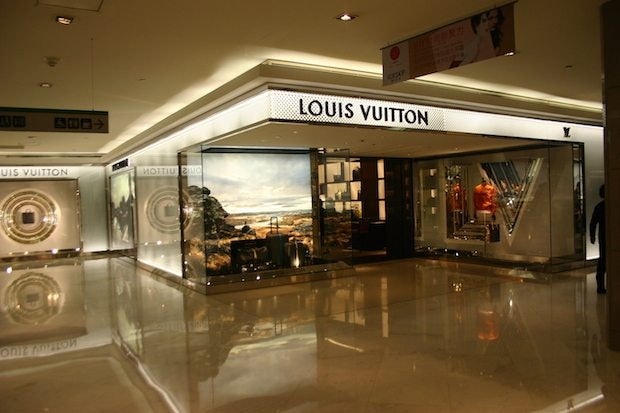
The Louis Vuitton store in Beijing's Shin Kong Place mall. (Jing Daily)
This article was published earlier in our weekly newsletter. Sign up through our “Newsletter Sign Up” box on the right.
As luxury brands vie to create the next “it” bag to become a global fashion sensation, their efforts are always accompanied by a concern that too much popularity could lead to overexposure and create long-term harm. While this is a risk worldwide, it's arguably greatest in China, where unique market conditions amplify the effects of this problem at a time when growth is needed more than ever.
According to a recent Financial Times survey, mega-brand Louis Vuitton currently faces this issue in China’s first-tier cities. Based on responses from Chinese luxury consumers, the FT found that while Louis Vuitton is still massively popular in cities across China, demand is lower in more mature markets. It found that 38.3 percent of respondents in third-tier cities named Louis Vuitton as the brand they most aspired to own, but only 18.8 percent of those in first-tier cities said the same. Meanwhile, results for other major brands like Chanel, Prada, and Gucci were more mixed—for example, Prada saw its greatest demand in first-tier cities.
This doesn’t mean Louis Vuitton is doing poorly when it comes to demand—in fact, demand in second- and third-tier cities soared above all the other brands listed. However, the difference between cities highlights Chinese consumers’ growing diversity in taste as they mature. According to Financial Times, a “large percentage” of survey respondents didn’t want to purchase brands already owned by too many people, while giving 3.92 rating on five-point scale saying that they bought luxury goods to express their “personal tastes.”
Thanks to widely available fakes and shifting consumer tastes, overexposure in the China market is a significant risk for brands that have been able to achieve massive popularity with Chinese buyers. The market’s hottest items are the ones that become the most frequently counterfeited and distributed on Taobao, and thus create a perception that they've become too common. This is happening at a time when the availability of smaller niche brands is greater than ever for Chinese shoppers, via new boutique and department store openings, easier global travel, and the ability to order online from anywhere in the world.
In response to these market shifts, LVMH has taken a multi-faceted approach. In addition to promoting a wider and more diverse range of non-monogram styles for Louis Vuitton, the conglomerate has worked closely with Alibaba to reduce fakes on platforms like Tmall. In addition, LVMH has addressed Chinese demand for diversity by promoting smaller portfolio labels like Céline and Donna Karan. For other brands, a page from the LVMH playbook isn’t without its challenges—it’s been extremely difficult for most brands to get fakes taken down en masse. Whether a major conglomerate or an independent label, it’s key for luxury brands to consistently adapt and innovate for the China market as competition heats up and growth settles at its “new normal.”